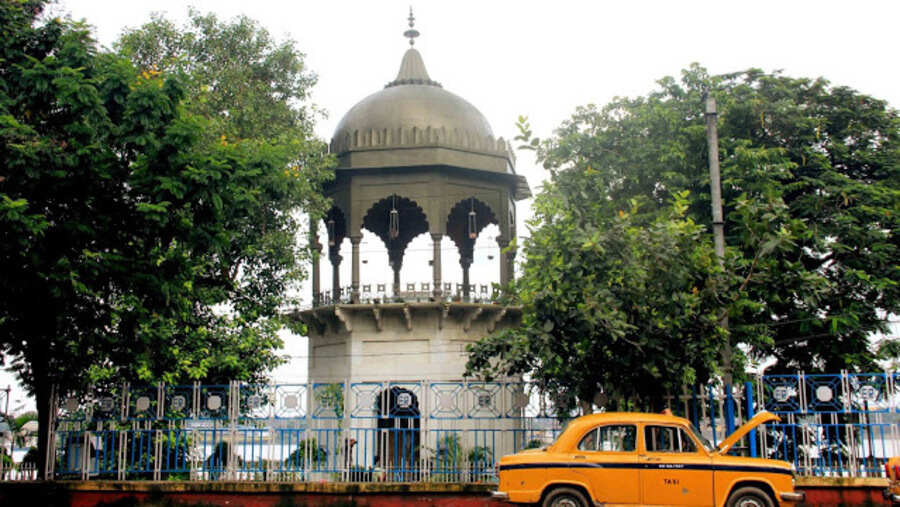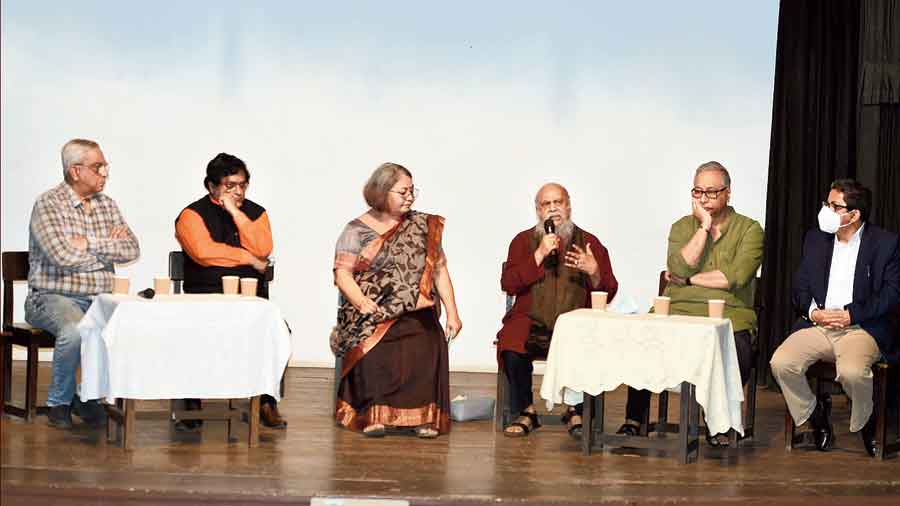One cannot forget Waheeda Rahman’s divine beauty in the iconic Geeta Dutt song Jane Kya Tune Kahi in Guru Dutt’s 1957 classic Pyaasa. What many may not realise is that the song was partly filmed in front of a Kolkata monument which now lies largely in oblivion.
Situated between Prinsep and Outram ghats off Strand Road, this historically significant structure is known as the Gwalior Monument. The black-and-white monument built in marble and cast iron is a British war memorial, though often mistaken for a Mughal-era hawa ghar owing to its architectural style.
Built in 1847 at the prime of East India Company’s business in the country when ‘Calcutta’ was a booming port city, this is perhaps the least visited landmark of colonial Calcutta.
A monument of war
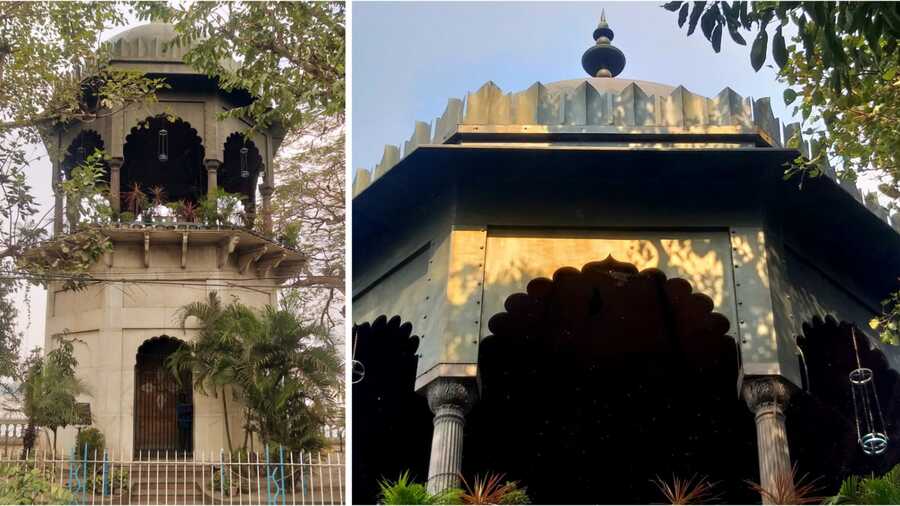
The monument’s Indo-Saracenic or Mughal-Gothic architecture shows the influence Indian architectural styles had on British design Somen Sengupta
The Indo-Saracenic or Indo-Gothic architecture of the Gwalior Monument is testament to how profoundly Indian architectural styles influenced British engineers and designers of the time. The monument came to be following a bloody war on the other side of the country.
In 1843, in the midst of their goal to conquer India’s princely states, the East India Company targeted Maratha-ruled Gwalior in today’s Madhya Pradesh. The queen of Gwalior was told to reduce the size of her army but did not comply and two gory battles followed, fought 30km apart, at Maharajpur and Punniar respectively, on December 29.
The Marathas, ruled by the Scindia clan, fought valiantly but numerous lost men and cannons to the British army, who also lost no less than 787 soldiers but won the battles. The victory received praise from the Duke of Wellington, and the then Governor-General of India Lord Ellenborough planned a war memorial in Calcutta to immortalise the event.
The plan put forth in 1844 came to fruition in the form of the Gwalior Monument built in 1847. It was designed by Colonel H. Goodwyn, who worked with Bengal Engineers, and was built by Jessop and Company.
An amalgamation of cultures
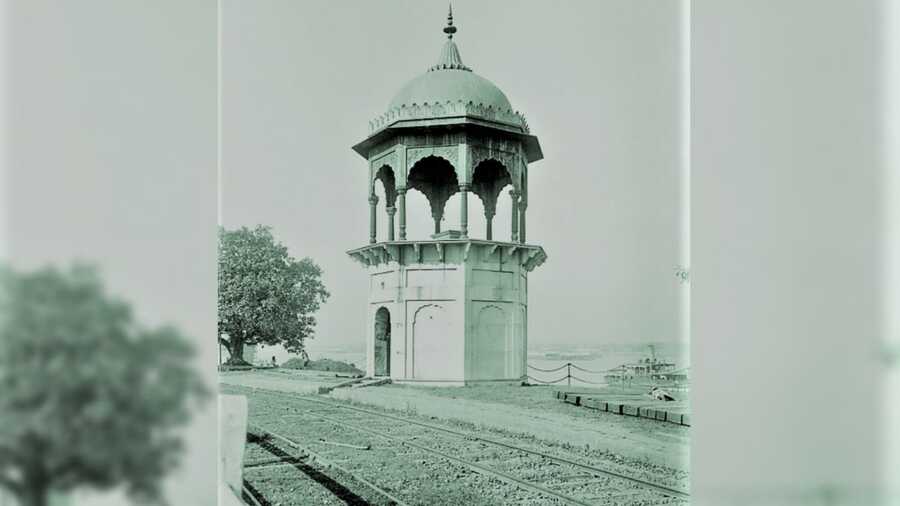
The British designed structure is often mistaken for a Mughal pleasure pavilion owing to its design Wikimedia Commons
The design of the about 60-foot-high structure resembles a riverside pleasure pavilion with the Mughal-style cupola or chhatri crowning the octagonal cenotaph. Mughal-inspired motifs like lotus flowers and kalis decorate the cast-iron dome. Open on all sides, the pavilion’s brass pillars also have Indian-inspired floral designs.
An array of beautiful marble brackets support the marble slabs, which form the centre of the structure that stands on a marble base. The materials for this marble-metal-and-stone monument are believed to have been brought from Gwalior, with some stories claiming that the metal was derived by melting the Maratha cannons captured from the battlegrounds.
A spiral staircase from the base leads into the pavilion that houses a brazen sarcophagus, with the names of the fallen soldiers inscribed on its surface. Unfortunately, entry into the pavilion is prohibited and one needs permission from the PWD to gain access.
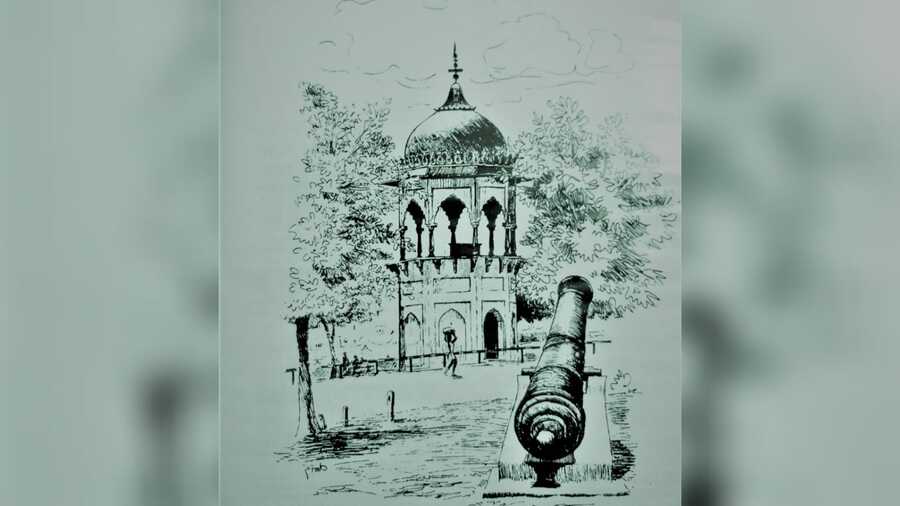
In his book, illustrator Desmond Doig, who sketched many ‘Calcutta’ landmarks for ‘The Statesman,’ nicknamed the monument ‘Pepper Pot’ 'The Heritage of Calcutta' by Desmond Doig
According to the description of illustrator Desmond Doig, who did a series of sketches for The Statesman in 1966, the beautifully done inscription has the names of soldiers, both Indian and British, from various regiments including headquarter staff, artillery, cavalry, native infantry and grenadiers, among others. Soldiers with unfamiliar ranks like bombardiers, roughriders and even drummers, trumpeters and musicians are included in the list. Doig also found a small canon across the road which he lovingly named “kissing canon” after seeing young couples around it. In his book, the illustrator also nicknamed the monument “Pepper Pot,” probably owing to its shape.
Ellenborough’s folly
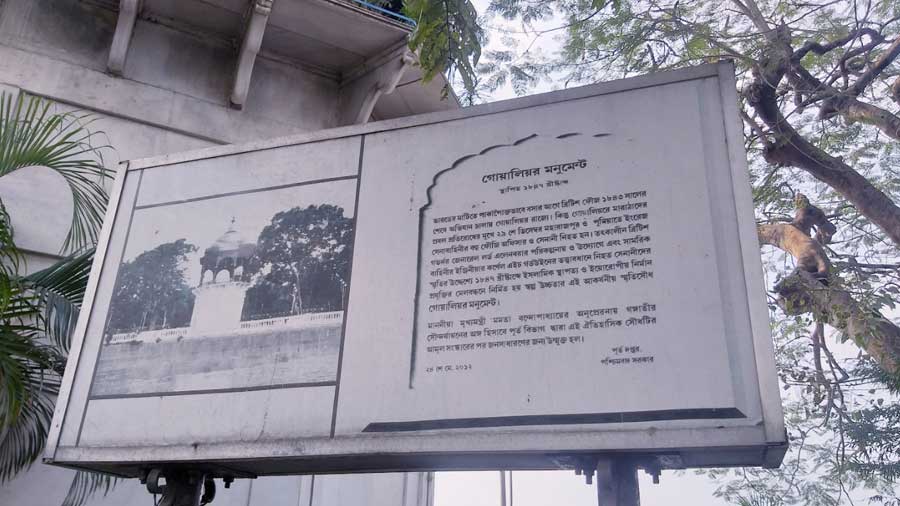
A government-erected signboard at the gated site documents the history of the Gwalior Monument Somen Sengupta
Like many older monuments around the country, the Gwalior Monument is in need of some care. A plethora of flower pots cover the open sides of the pavilion hiding the sarcophagus from view, and even though a government signboard stating its historical importance has been placed and the area gated in, garbage litters the overgrown vegetation around.
A marble slab to the right of the gate indicates that the monument was restored by U.B. Group of Bangalore under the supervision of Indian National Trust for Art and Cultural Heritage (INTACH) in 1990, but it has since seen neglect.
The Gwalior Monument, with its Indo-Mughal aesthetics is often ridiculed as “Ellenborough’s Folly” — built by a controversial British figure for fallen soldiers and then forgotten by the British themselves. Its unassuming presence and present state seems to hark back to this past name, which doesn’t say much about its complicated yet significant heritage.
